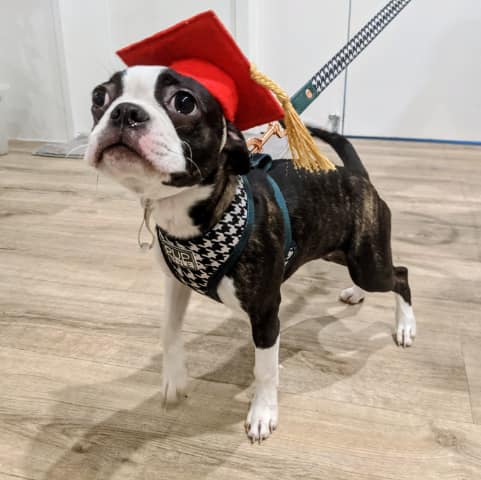
Having a pet dog, you know how much it means to you to waking up in the morning and seeing the eager faces of your fur kids, all curled up and snoozing on the sofa. But again, you cannot deny the fear of facing some possible behavioural situation every time you go out with your dog or have guests at home.
Does your over enthusiast puppy tend to jump on strangers while walking in the park, and those strangers end up scratched and bruised? Or sometimes your overprotective dog’s continuous burking makes your guests feel less welcome and uncomfortable.
If you have a pup, you know the struggle, right?
Good dog training is a must need for your furry friend
It’s necessary to train your dog to prevent yourself from your dog’s excessive and unwelcome behaviour. Training your dog does not only mean having a dog who will sit and stay by your words; rather a training will let you and your furry friend communicate more and understand each other. For yourself, your family and friends, a well-trained dog ensure a safer environment.
Here are some tricks to gain control of your dog.
Some tricks to control and train your canine companion
Give them structure from an early age
Dogs, or mostly the pups, are known for being constant learners who start learning since birth. So at their younger age, you can start with basic puppy training, and gradually they will begin formatting their habit. Otherwise, once the bad habit moves to adulthood, it becomes hard and unbearable. So the earlier you start the process, the earlier your pup will respond.
Know your dog
To be a good pet parent and control your pup, you should definitely understand how the puppy feels through body language and behaviour. As the owner, you should be familiar with situations such as what fears the pup most, what annoys him and what leads him to excessive barking. Once you get the root causes of the unwelcomed behaviour, it would be easier for your puppy training.
Set off to no punishment method
Dogs like to respond to love and reward. Physical force or punishment such as pushing the dog’s bottom forcefully, using an electronic dog collar, making them afraid of the thing they fear the most can lead to anxiety, negative and other opposing effects. Use positive reinforcement and also negative reinforcement in the right way, such as avoiding them or removing some of their favourite things.
Don’t forget to give rewards
Whenever your dog is learning a new behaviour, reward them with treats, praises, toys or a quick walk every time you get the desired behaviour. Try to reward them immediately after the act so that they can understand the activities they get rewarded for. Further, they will be more encouraged to repeat the same behaviour. Gradually when your pet reliably learns the behaviour, apply continuous praising but reduce the number of rewards and keep applying different positive reinforcements.
Don’t treat them as the alpha of your house
Make your pets understand that they are not the boss; rather, you are in charge of the house. Make them wait for their food to help them to be more patient. Control their access to doorways, control the dog staffs, choose their toys for each days. Make them move out the way every time someone pass the way. Don’t make your dog walk you; rather, you should walk your dog; otherwise, they will get a sense of hierarchy if you keep treating them with no control.
Set some house rules
Make all your home members involve in the processing and always be consistent in teaching the rules. Don’t make your dog confused. For example, if you are rewarding your dog for sitting whenever you say the word “sit” but your other family members are not giving the pup any reward for the act, the dog will become confused.
Interrupt into their over-energetic outburst
Whenever your dog is doing something unexpected, interrupt its activities immediately. Use commands to make them aware that the act is unacceptable and inappropriate. Such as when your dog is barking continuously use commands such as “stop”, “enough”. When he does stop, praise him or sometimes treat him.
Dominate them in a calm and controlled way
Practice patience during the whole process. Remember that you are asking a lot of your dog, so the process still needs some time. Stay dominant by remaining calm and silent. Such as you can establish eye contact, give silent treatment and use hand gestures to dominate them calmly, keeping the pitch of your tone low.
So, these are some of the strategies you can take to control your pup. Now you might be in a dilemma to decide whether your newly adopted pup needs to be trained in a puppy school or not. Even if you are not sure how a puppy school will help build your dog’s life foundation, read on to clarify some details.

Why step into professional puppy training classes to get your pup trained?
Dog owners seeking professional’s puppy school might be considered wrong as many think that dog training can be simply achieved that anyone can do on their own. So why take the help of professionals?
Who doesn’t enjoy the company of a well-trained dog! Don’t you think it would be tough sometimes for a dog owner to turn around the bad behaviour or some cases since they don’t know professional trainers’ advanced knowledge? But when your pup attends puppy school and is being handled under a professional’s guidance, the trainers will help your dog learn commands, better behaviour and communication. Moreover, by meeting new dogs and other people, your pup becomes more social and learns appropriate behaviour with outside people other than the owner and family member.
So why to waste your fur friend’s potential to learn! Because in the end, the investment would be worth it.
